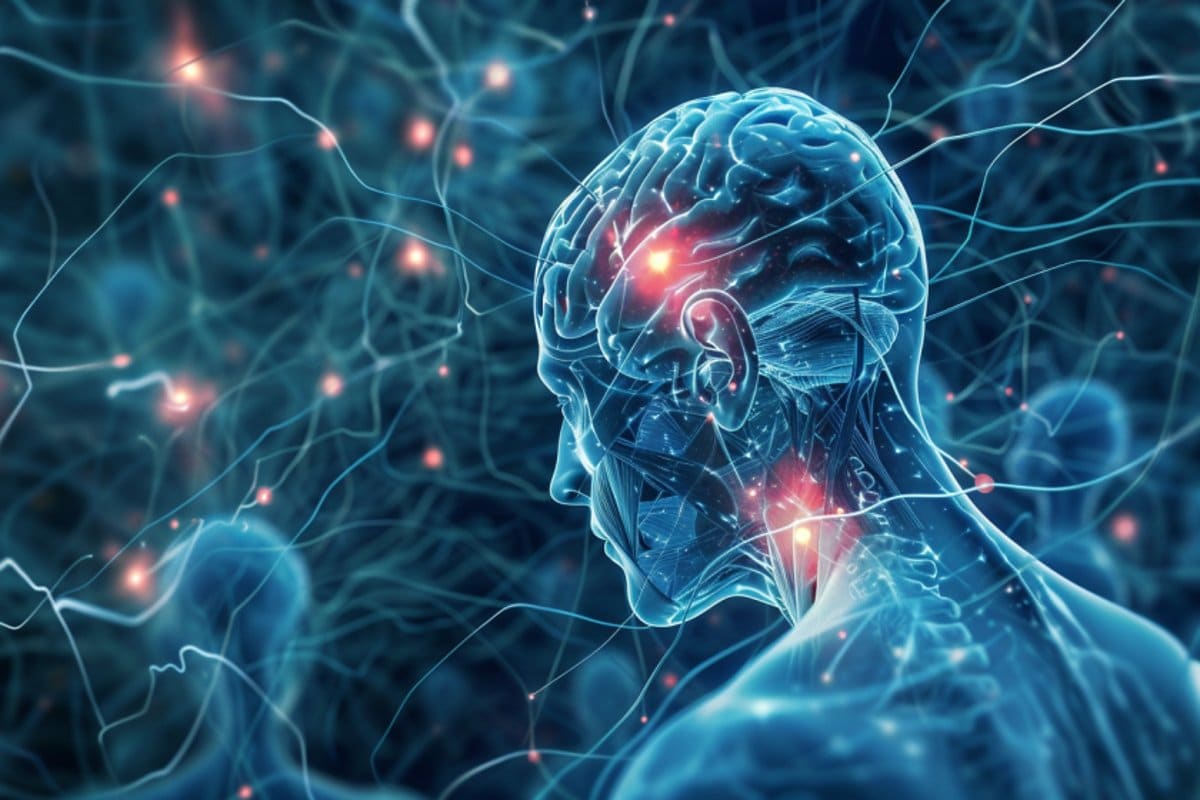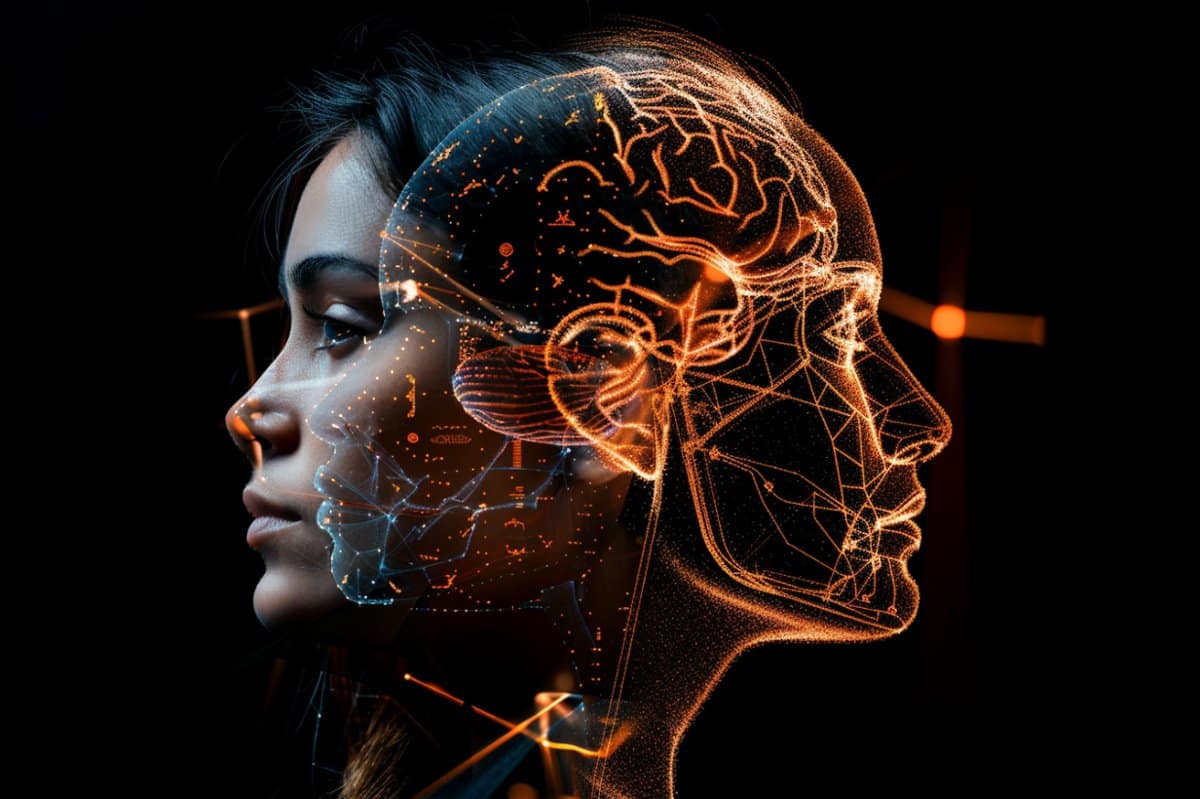The deepfake game is moving so quickly that looking for the usual signs (like an unsettling pair of eyes or hands with six fingers) isn’t your best defense mechanism.

Back in the spring, an Instagram video surfaced of Britney Spears dancing. Nothing out of the ordinary there. But then, online sleuths noticed that when the pop star swept her arms up over her head, her face seemed to suddenly change in an instant, like she’d been wiping off a mask. Unsurprisingly, the footage blew up, and was swiftly deleted from the account.
After the dust settled, there were two schools of thought on the video: one staunchly claiming the video was a deepfake—or a piece of synthetic media that’s been altered in a deceptive way using a specific type of artificial intelligence—and the other claiming it was a simple Instagram filter that started glitching as Spears moved.
The Spears incident illustrates just how dangerous the internet can be when you take images at face value. That’s a grave mistake, as the internet is teeming with deepfakes. Compared to the same period in 2022, there have been three times as many deepfake videos and eight times as many voice deepfakes posted online in 2023, according to DeepMedia, a company working with the U.S. Department of Defense, the United Nations, and global tech companies to detect deepfakes.
So how does this trickery work? How can we figure out which videos of Britney Spears are real and which have been doctored?
What Is a Deepfake?
Deepfakes have been around since 2014, when Ian Goodfellow first invented them during his time as a machine learning Ph.D. student at the University of Montréal. (Today, he’s a research scientist at DeepMind, an AI research lab run by Google.) To create deepfakes, he came up with a machine learning model called generative adversarial networks, or GANs.
Machine learning is a subfield of artificial intelligence focused on creating statistical algorithms that can perform tasks without explicit instructions.
GANs help algorithms move beyond the simple task of classifying data into the arena of creating data—in this case, deceptive media. This happens when two neural networks try to fool each other into thinking that an image is real. Using as little as one image, a tried-and-tested GAN can create a video clip of, say, Richard Nixon saying something that is patently false and that he never even actually said. (Yes, this has already been made).
As AI has progressed, these dupes have become more convincing and easier to create. Deepfakers once needed to grind away on software tools like Adobe Photoshop or AfterEffects, editing each video frame by frame in an arduous, time-consuming process. Today, deep neural networks have advanced to help GANs operate more accurately, and large public databases and deep learning methods are now widely available thanks to free, accessible tools online. As a result, it’s cheaper to create deepfakes: as recently as late 2022, a voice clone cost about $10,000 in server and AI training costs, but now you can create deepfakes with off-the-shelf software for just a few dollars, according to DeepMedia.
“It’s democratizing access to tools that have historically been in the hands of the few and now are in the hands of many,” Hany Farid, Ph.D., a University of California, Berkeley professor of computer science and electrical engineering, tells Popular Mechanics.
How to Spot Deepfakes
Tons of online resources showcase red herrings to look for when cracking footage that you suspect has been tampered with to create a deepfake. We’ve seen this previously with AI image generators struggling to accurately replicate hands, often giving people extra fingers that were sometimes viciously contorted. (However, this issue has improved, with image generators like MidJourney able to accurately depict human hands.)Whether these detection tips are coming from Reddit or the MIT Media Lab, the visual artifacts in question might be gone by the time they’ve been spotted.
“Here’s the problem: I can tell you a few things, but six months from now, that advice is going to be useless,” Farid says. The deepfake game is moving so quickly that looking for mistakes isn’t your best defense mechanism.
“I can tell you a few things, but six months from now, that advice is going to be useless.”
“The best way to protect yourself against fraud and disinformation online is the old-fashioned way, which is to think about where you’re getting your information,” Farid explains. Look at most of the content you absorb from social media with a grain of salt; there’s a much lesser chance that well-trusted editorial outlets like the New York Times, NPR, the Washington Post, BBC, etc. would knowingly publish a deepfake—let alone take it at face value. Most outlets have a process for verifying (to the best of their availability) that videos are real.
One of those methods is a simple reverse image search—effective for both videos and images—to verify footage/photographs that are sent in. This fairly straightforward process allows you to find where images/videos came from, and where else they’ve been used (or possibly plagiarized.) This is one of the most basic forms of digital forensics that you can use to spot-check content quickly.
Digital forensics is a branch of forensic science that focuses on identifying, acquiring, processing, analyzing, and reporting on data that’s stored electronically.
Creating Deepfakes
We’re obviously not going to tell you how to generate deepfakes of your own, but the creation process is still an important part of understanding them. Generating a convincing video still takes considerable time, processing power, and money. Most consumer-level computers won’t have nearly enough processing power to crank out deepfakes quickly enough to be effective. Deepfakes can take weeks, sometimes months to dial in perfectly.
Photo deepfakes are considerably easier—and faster—to create. AI image generators like Dall-E, Stable Diffusion, and Midjourney are incredibly close to creating truly photorealistic images based on simple text prompts. “And so it’s just a matter of time now, which we can probably measure in months, before these cross through what we call the uncanny valley,” Farid says. This “uncanny valley” refers to software that can create images that are indistinguishable from reality. We’re not there quite yet, but we’re incredibly close
Audio dupes are even closer to the uncanny valley, with the ability to create clips using short samples of someone’s voice—even just a few seconds’ worth. Farid tells us that it won’t be long before we live in a world where hackers can fake someone’s voice in real-time during a phone call.
Deepfakes in the News
The whole Britney Spears debacle is proof that deepfakes can have real and legitimate consequences. If we look back seven months ago, the Spears footage led to claims that she was dead. It’s even been reported that some went as far as calling the cops to conduct wellness checks on her—an obvious breach of privacy. The stakes get even higher when it comes to deepfakes being used as political weaponry.
Bad actors have already been caught using AI image generators to create deepfakes of “shock and awe” scenes from the ongoing Gaza conflict that simply never happened. Both sides have been using deepfakes as a tool to sway the narrative of such an emotionally charged moment in history.
Reading through Farid’s November 2022 research paper, “Protecting World Leaders Against Deep Fakes,” published in the Proceedings of the National Academy of Sciences of the United States of America, he mentions a particularly compelling example from comedian and filmmaker Jordan Peele. It’s a modified video of Obama’s many presidential addresses where the audio has been altered—with the lips synced to match. Below we’ve embedded a much more politically neutral video that demonstrates how the University of Washington created another convincing deepfake of former President Barack Obama.
The key takeaway is that we’ll be able to reverse engineer deepfakes … once we fully understand how they’re created.
What’s Next?
We learned that digital forensics is a viable solution for detecting deepfakes in theory, but isn’t scalable to churn through the firehose of deepfakes that are dousing social media platforms. “They’re not designed really to work at that scale, at the scale of 500 hours of video uploaded to YouTube every minute,” Farid says.
Some of the most promising work involves systems that add a digital tag to original content that you created on your device. “The device will determine who you are, where you are, when you were there, and what you recorded,” he says. This would provide a quick and easy solution for social media platforms to authenticate real content from fakes.
On the forensic side, Farid has plenty of tools to detect deepfakes after they’ve been generated. Some of them are AI-based, and others use physics-based analysis. “We know that real images and synthetic images are constructed differently,” Farid says. “We have AI models that are trained on hundreds and hundreds of thousands of real images and fake images looking for statistical patterns.”
So, the proper solution in the future is a combination of digital forensic tools and digital fingerprints to mark original content. In the meantime, the best way to avoid being fooled is to use your head. If something seems off, it probably is.



